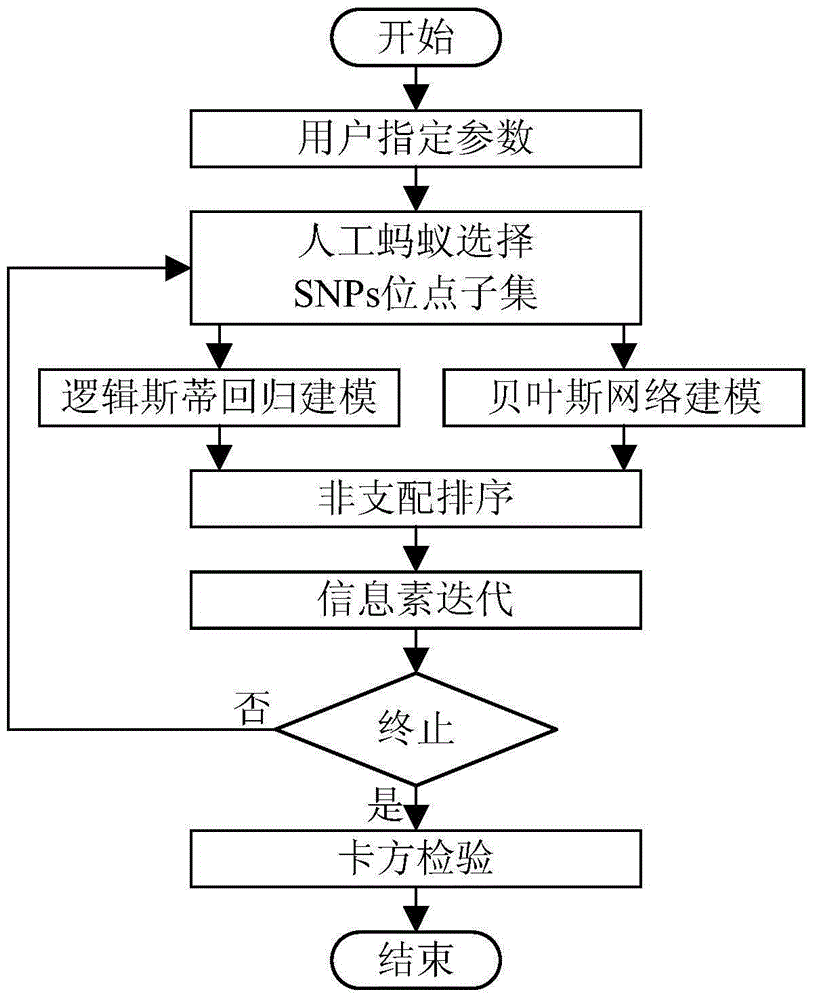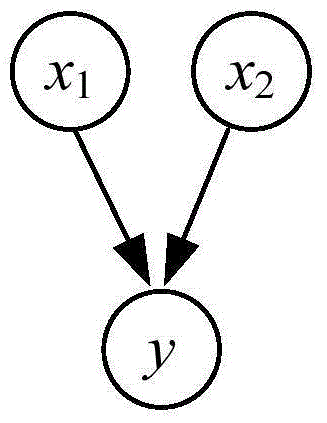Genetic locus excavation method based on multi-target ant colony optimization algorithm
An ant colony optimization algorithm and gene locus technology, applied in the field of information processing, to achieve the effect of improving the positioning speed, improving the robustness, and reducing the false positive rate and false negative rate
- Summary
- Abstract
- Description
- Claims
- Application Information
AI Technical Summary
Problems solved by technology
Method used
Image
Examples
Embodiment 1
[0025] Such as figure 1 As shown, this embodiment first uses the ant colony algorithm as the basis of the packaged feature selection algorithm to find feature subsets; secondly, uses two methods of logistic regression and Bayesian network as the two objectives of the multi-objective optimization algorithm Carry out modeling evaluation on the previously found feature subsets and corresponding class labels; then use multi-objective optimization theory to optimize to obtain non-dominated solution sets, and perform ant colony algorithm iteration according to the characteristics of non-dominated solution sets screened by multi-objective optimization; Finally, the chi-square test was used to perform an exhaustive hypothesis test on the previously screened characteristics to obtain the genetic loci associated with complex traits according to the preset P value.
[0026] The implementation of this embodiment is based on the following virtual genome-wide association datasets:
[0027]...
PUM
 Login to View More
Login to View More Abstract
Description
Claims
Application Information
 Login to View More
Login to View More - R&D
- Intellectual Property
- Life Sciences
- Materials
- Tech Scout
- Unparalleled Data Quality
- Higher Quality Content
- 60% Fewer Hallucinations
Browse by: Latest US Patents, China's latest patents, Technical Efficacy Thesaurus, Application Domain, Technology Topic, Popular Technical Reports.
© 2025 PatSnap. All rights reserved.Legal|Privacy policy|Modern Slavery Act Transparency Statement|Sitemap|About US| Contact US: help@patsnap.com



